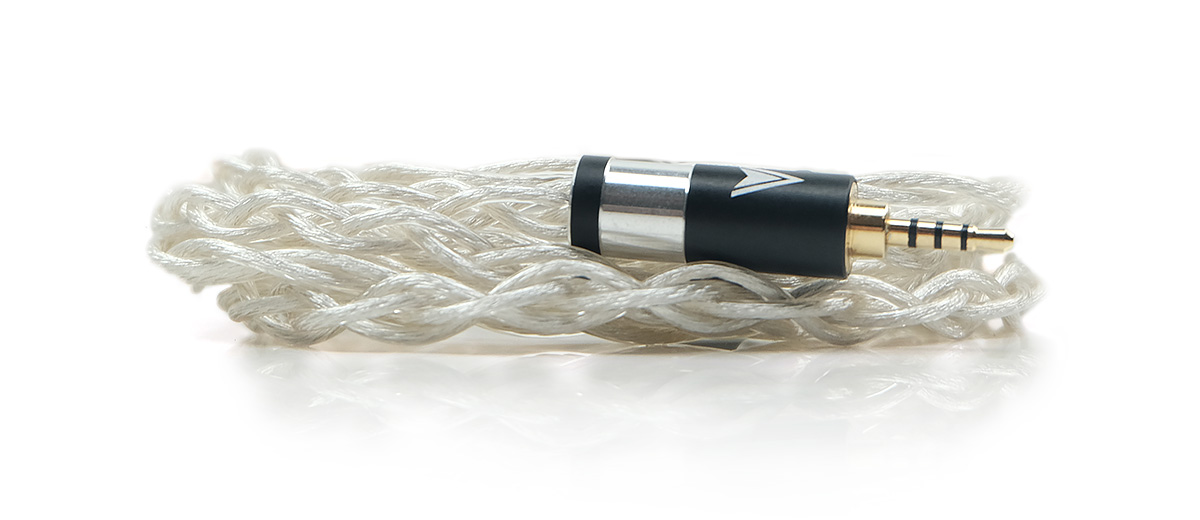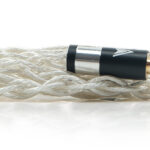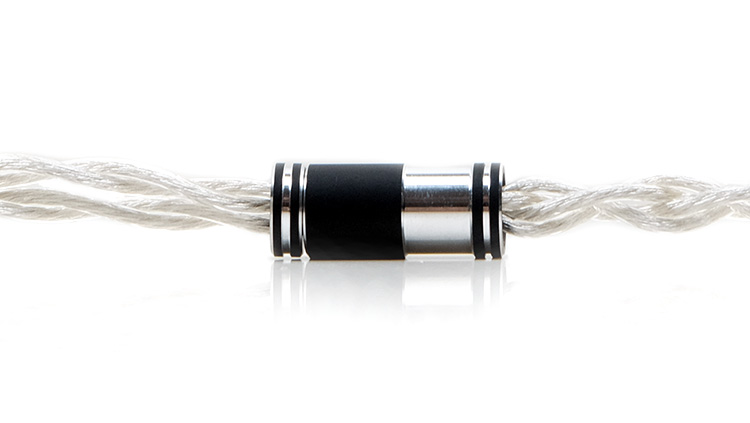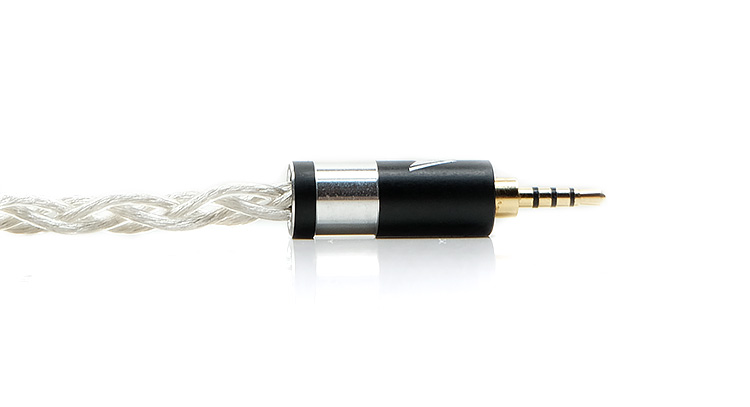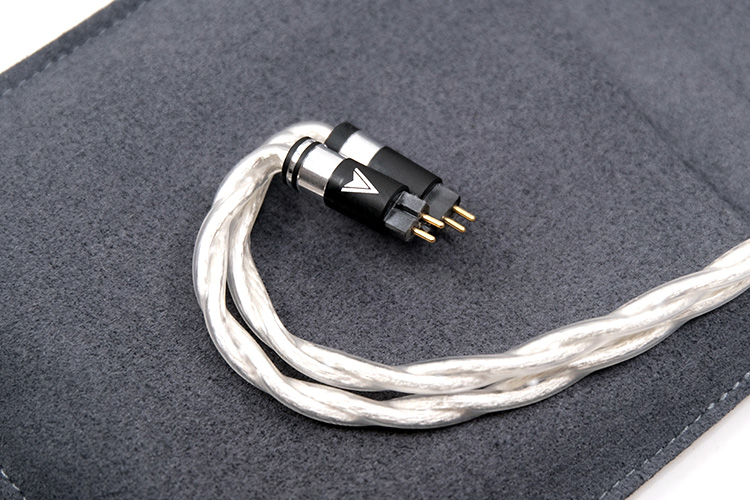Today, we review the Astral Acoustics Eclipse which is a new flagship aftermarket in-ear monitor cable consisting of a 24AWG Silver Litz geometry. It has a price of $950.
Disclaimer: This sample was sent to us in exchange for our honest opinion. Headfonics is an independent website with no affiliate status or links. We thank Astral Acoustics for this opportunity.
You can click here to learn more about Astral Acoustics products that have been previously assessed on Headfonics.
Note, that this feature follows our latest scoring guidelines which you can read in more detail here.
It is an ironic twist of fate that my first review of the last two years has been from Astral Acoustics and both of them ‘headline’ silver cables. Last year it was the Reference Silver, this time it is their new flagship Eclipse aftermarket IEM cable.
Naturally for a flagship, the Eclipse price is a bit higher at $950 compared to the Silver’s $750 but considering where high-end cable prices have been going these last few years some might consider this a more reasonable offering.
Surprisingly, the Eclipse pitch is not neutral or reference, that accolade goes to the Reference Silver. This time we get buzzwords like warmth, rumble, and sweetness. Terms I do not commonly associate with a stereotypical silver wire.
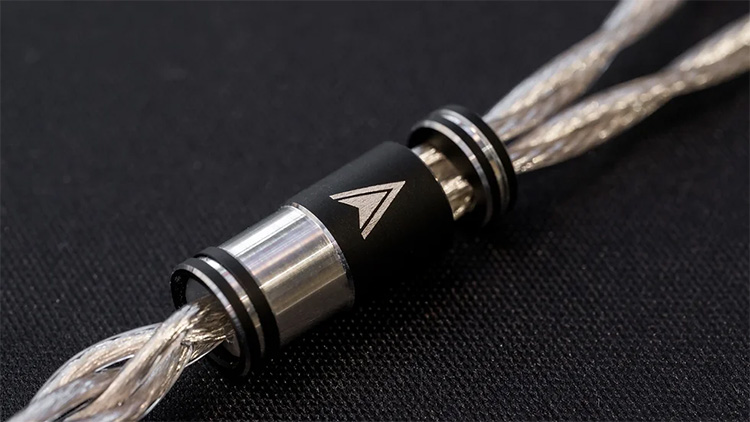
Tech Highlights
Material & Wire
The Eclipse uses a pure 5N Silver composition for its internal wiring. On paper, this seems on par with the cheaper Reference Silver, however, the Eclipse has a thicker stranding composition and a higher-purity silver material rather than the Reference OCC. It also uses an upgraded solder material.
For those that are new to what the 5N means, this is the purity level of the fine silver used with 1N the lowest and 6N the highest. Though 6N silver is incredibly expensive compared to 5N.
This is how purity is defined when acquiring alloying materials. It is not a wholly accurate measure and is generally taken as an approximation but the N stands for numbers on either side of the decimal point.
In this case, 5 numbers or 99.999%. You will see lower purity standards such as 4N and it works in the same manner at 99.99%. The numbers above give you a broader understanding of the entire range used.
The Eclipse gauge is also quite large with a 24AWG gauge rating. It is not quite as dense as the Reference Silver which was a 23.5AWG Type 6 build but it’s still a bit bulkier looking than your normal IEM cable.
One of the benefits of a thicker gauge is the reduction in performance resistance compared to the usual aftermarket 26AWG sweet spot. Ideally, dynamic range and staging capability from paired monitors should be a step up without having to go to 8-wires as a result.
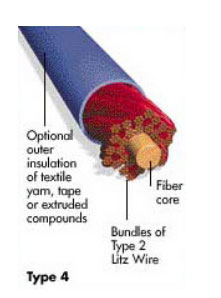
Geometry
Astral Acoustics uses a Type 4 Litz geometry with a 4-wire implementation for the Eclipse which, surprisingly, is a bit less complex than the Type 6 Litz build of the Reference Silver.
There is a reason for this and its more to do with the desired tuning. For Astral Acoustics, they felt that the Type 4 version sounds ‘less tight’ when compared to a Type 6 version which fits in with their drive for a more ‘musical performance’ from the Eclipse.
Generally speaking, Litz is an excellent wire for reducing the level of resistance, especially on lower gauge variants. Their lack of material depth and excellent insulating properties means they do a better job than most in reducing the skin and proximity effect on typical non-Litz wiring.
The Type 4 Litz geometry features bundles of twisted wire twisted around a central fiber core and is a fairly advanced Litz build for reducing the “skin effect” in electrical wiring.
The skin effect is the tendency of radio frequencies to be concentrated at the surface of the conductor. Litz constructions counteract this effect by increasing the amount of surface area without significantly increasing the size of the conductor.
On an aesthetic level, Litz will prevent nasty green oxidization tints on the silver wire that you often see on regular non-Litz builds. This cable should retain its color for its entire lifespan.
Design
It is hard not to cast a glance from afar at both the Eclipse and the Reference Silver and state that aside from the barrels they look the same with that uber-silvery shimmer under an equally soft and translucent PVC jacket.
That is not a bad thing considering the Reference Silver was a handsome fella in its own right and the Eclipse equally so. There are some very subtle differences in the samples I have here, however, I cannot say for sure if that is by design or just a running production change or variation.
The first is the braiding technique which has an ever so slightly longer throw compared to Reference Silver. This may well be due to the thicker stranding inside the Eclipse forcing AA to just keep a slightly looser profile in the braid bending.
Handling
Given its large gauge size, the overall diameter of the Eclipse is a bit bigger than your standard 26AWG aftermarket cable but on par with the Reference Silver dimensions.
However, it’s still a very soft PVC jacket in use here so it never feels wieldy and stiff like the Wagnus Zillion Sheep builds or the new PLUSSOUND jackets used on cables such as the Silver+. Also, it feels lighter compared to the Reference Silver with the new lighter barrel constructions being a major factor in that reduced weight.
Despite the enhanced density, the Eclipse has an impressively low level of microphonics during usage. More so below the splitter than above which is quite normal for most IEM cables.
One thing to note is the absence of the PVC overmolds for strain relief at the base of the Eclipse jack, something that was present on the Reference Silver. I suspect strain relief is not internalized which is a plus for me as it helps tidy up the overall external look of the cable.
Strain relief on the new splitter barrel is also internalized with a medium-length soft PVC overmold doubling for strain relief or ‘memory wire’ on the connectors.
Finishing
It’s all changed here on the Eclipse finishing with some new branding-specific black and silver alu7075 barrels, (aluminum). These do feel a lot lighter than the previous Reference Silver titanium barrels and it has a major effect on the handling in my opinion with less ‘swing’ at the base of the cable when you are dangling it.
Whilst some might fret about the reduced durability of using aluminum over titanium, however, the new Eclipse barrels feel pretty solid, just with less weight. They are also the most mature-looking branded barrels Astral Acoustics has developed to date and are unique from competing designs.
I do like the silver and black contrast, and it is a nice complement to the silver hue of the main Eclipse cable. However, more than that, it is the more complex finishing in the alternating black and silver rings, particularly on the main barrel and chin cinch that suggests a growing maturity in barrel design.
For terminations you get three barrel choices, 3.5mm, 2.5mm TRRS, and 4.4mm Pentaconn. For connectors, you get a fairly wide choice of everything from the general 2-pin 0.78mm connector and MMCX to the more esoteric Fit Ear and QDC’s quirky reversed polarity 2-pin connectors.
Accessories & Packaging
If there is one area I think a flagship cable should differ from the rest of the lineup then it is the packaging. There is nothing strictly wrong with the AA packaging for the Eclipse. It is the same tried and tested small branded black retail box and the excellent compact suede drawstring carry pouch which is ideal for keeping shipping costs relatively low.
However, I think if you are going to shell out $95o I would be looking for something more grandiose perhaps to give it a premium appearance from the get-go. Maybe the same box but in a leather finish? A higher grade of leather for the cable organizing strap? Things to consider maybe.
One thing that is new since I last reviewed the Reference Silver is the inclusion of a warranty card including a nice envelope holder. It’s a classy look and most welcome but again, nothing overly substantial on what has come before.

